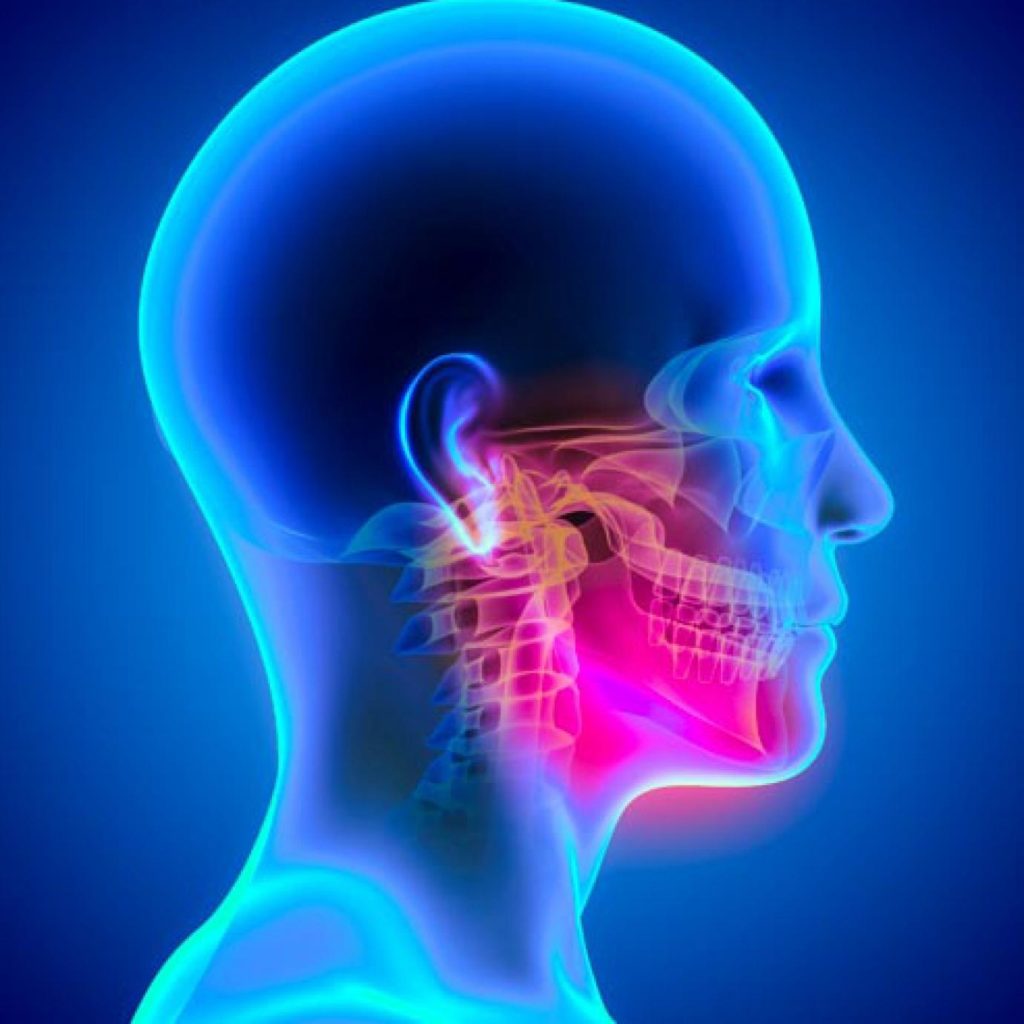TMJ Disorders
TEMPOROMANDIBULAR JOINT DISORDERS (TMD, TMJ)
WHAT IS TEMPOROMANDIBULAR JOINT?
The temporomandibular joint is a joint that connects your jaw to your skull. When this joint is injured or damaged, it can lead to a localized pain disorder called temporomandibular disorder (TMD) or temporomandibular joint (TMJ) syndrome.
WHAT CAUSES TEMPOROMANDIBULAR DISORDERS?
The causes of TMD are not known, but it can be closely related to:
- Injury to the teeth
- Grinding or clenching your teeth
- Injury to the jaw
- Poor posture in the neck and upper back muscles.
- Arthritis in the joint
- Stress may increase muscle tension and clenching of teeth.
- Gum chewing
- Misalignment of teeth or jaw

WHAT ARE THE SIGNS AND SYMPTOMS OF TMD?
TMD symptoms often cause severe pain and discomfort. This joint is close to the ear, causing pain that may involve the face, eyes, ear, neck, forehead. Among the signs and symptoms of TMD we have the following:
- Pop or click of the jaw (at the moment of mouth opening)
- Limited mouth opening
- Jaw can get “locked” when opening or closing mouth.
- Headaches
- Ringing sound in the ears (tinnitus)
- Dizziness
- Muscle spasms in the jaw.
- Pain and difficulty during chewing.
WHAT IS THE TREATMENT FOR TMD?
There are some things you can do at home to help relieve TMD symptoms:
- Ice or cold packs in the area of the joint
- Nonsteroidal anti-inflammatory drugs (NSAIDS) such as ibuprofen, naproxen, etc.
- Avoid chewing gum
- Eat soft food
- Relaxation techniques to help release stress
- Avoid extreme jaw movements
When home remedies are not being effective, dental treatment is necessary:
- An occlusal splint of night guard: This device keeps teeth aligned and prevents tooth grinding.
- Dental work: Your dentist can use certain restorations to balance the occlusion and correct bite problems.
- Botox application: a medical professional may use Botox in order to relax muscles of the jaw.
- Physical therapy
- Surgery of the jaw or dental surgery may be necessary in severe cases.
- Arthroscopy or arthrocentesis
- Joint replacement
- Trigger point injections: Pain medication or anesthesia is injected into jaw muscles to give pain relief.
- Medication: Muscle relaxant, anti-inflammatory drugs, nerve pain.
CAN I PREVENT TMD?
Yes, prevention can be achieved with the following:
- Maintaining proper posture
- Avoid chewing gum
- Eat soft foods
- Using dental splints
- Wearing a helmet or head guard during physical sports.
WHO TREATS TMD?
Temporomandibular disorders can be treated by a physician or pediatrician at first, they may refer you to an oral maxillofacial surgeon, otolaryngologist or prosthodontist, which are specialized in temporomandibular joint disorders.
A doctor will diagnose TMD with correct medical history, physical exams and sometimes they may send you a MRI of the temporomandibular joint.
